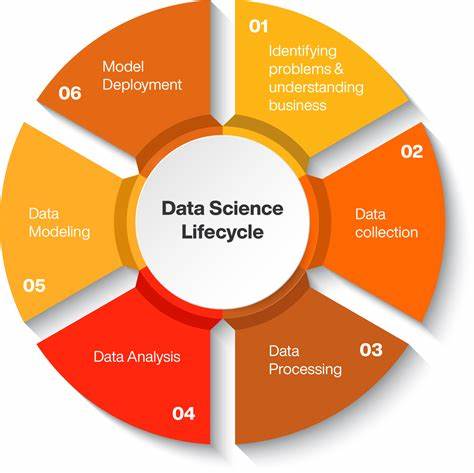What is Data Science
What is Data Science?
Data Science is a multidisciplinary field that combines statistics, mathematics, computer science, and domain knowledge to extract meaningful insights from large volumes of data. It encompasses various techniques for analyzing data, ranging from traditional statistical methods to advanced machine learning models. As we live in a data-driven world, Data Science plays a crucial role in making informed decisions across different industries, such as healthcare, finance, marketing, and more.
In this blog, we will explore the basics of Data Science, its key components, its importance in today's world, and the skills required to become a successful Data Scientist.
The Evolution of Data Science
Data Science has evolved significantly over the years. Initially, data analysis was limited to basic statistical methods, with professionals relying on manual calculations. With the growth of the internet and the rise of big data, traditional methods became inadequate to process and analyze the vast amounts of information generated.
In recent years, the introduction of powerful computing systems, advanced algorithms, and machine learning techniques has transformed the field. Data Science now involves complex data cleaning, statistical analysis, predictive modeling, and the application of artificial intelligence.
Image Prompt: "A timeline showcasing the evolution of Data Science, from traditional statistical methods to the integration of machine learning and AI."
Key Components of Data Science
-
Data Collection and Cleaning:
- Data is collected from various sources, such as databases, APIs, sensors, or the web.
- However, data is often messy and incomplete. Therefore, cleaning and preprocessing it is a critical step in the Data Science workflow.
- Tools like Python, R, and SQL are commonly used for data wrangling and cleaning.
-
Exploratory Data Analysis (EDA):
- This is the process of analyzing data to summarize its main characteristics, often using visual methods.
- Data scientists apply statistical graphics, plots, and charts to identify patterns, trends, and anomalies.
-
Statistical Analysis and Machine Learning:
- After data cleaning, statistical analysis helps to find correlations, trends, and insights.
- Machine learning models, such as regression, classification, clustering, and deep learning, are then used to make predictions and uncover deeper insights from data.
-
Data Visualization:
- Visualizing data is an essential part of Data Science. Tools like Matplotlib, Seaborn, Tableau, and Power BI are used to create visually appealing and easy-to-understand graphs.
- This helps in communicating findings to stakeholders and decision-makers.

Image Prompt: "A diagram showing the key components of Data Science: Data Collection, Cleaning, EDA, Machine Learning, and Data Visualization."
Applications of Data Science
Data Science is transforming industries and solving real-world problems. Here are some of the main applications:
- Healthcare: Data Science is used for predicting disease outbreaks, analyzing patient data, and personalizing treatment plans.
- Finance: It helps in risk assessment, fraud detection, and algorithmic trading by analyzing historical financial data.
- Marketing: Companies use Data Science to personalize marketing campaigns, optimize customer segmentation, and predict customer behavior.
- E-commerce: Recommendation systems like the ones used by Amazon and Netflix are powered by data science models, improving customer experience and increasing sales.
Image Prompt: "A set of icons representing the applications of Data Science in Healthcare, Finance, Marketing, and E-commerce."
Skills Required to Become a Data Scientist
To succeed in Data Science, a variety of technical and non-technical skills are required. Here’s a breakdown:

- Programming: Proficiency in programming languages such as Python, R, and SQL is essential for data manipulation and algorithm implementation.
- Statistics and Mathematics: A strong understanding of probability, linear algebra, and calculus is important for designing models and analyzing data.
- Machine Learning: Knowledge of supervised and unsupervised learning, as well as deep learning techniques, is necessary for building predictive models.
- Data Visualization: The ability to use tools like Tableau, Matplotlib, and Seaborn to create meaningful visual representations of data.
- Problem-Solving and Critical Thinking: Data Scientists must be able to identify problems, hypothesize solutions, and interpret results to derive actionable insights.
Image Prompt: "A mind map showcasing the skills required for Data Science, including Programming, Statistics, Machine Learning, and Data Visualization."
Why is Data Science Important?
Data Science has become a critical tool in almost every industry. The ability to process and analyze data allows businesses and organizations to make informed decisions, predict trends, and optimize processes. Whether it's predicting the next big trend, detecting fraud, or enhancing customer satisfaction, Data Science is at the heart of modern decision-making.
Additionally, the rapid advancement in AI and machine learning is expanding the role of Data Science in automating complex tasks, driving innovations, and opening new frontiers in research.
Image Prompt: "A visualization showing the importance of Data Science in various sectors, such as business, healthcare, and technology."
Conclusion
Data Science is a transformative field that is reshaping industries and revolutionizing the way we make decisions. With its ability to turn raw data into valuable insights, it is an essential skill for professionals and organizations alike. By learning the core components of Data Science and the skills necessary to excel in the field, anyone can embark on a successful journey in this dynamic and rewarding domain.
As the world becomes increasingly data-driven, Data Science will continue to play a pivotal role in solving the world's most pressing problems.
Comments
Post a Comment